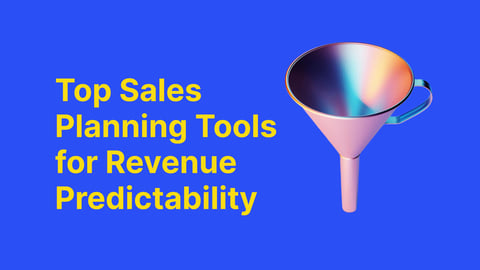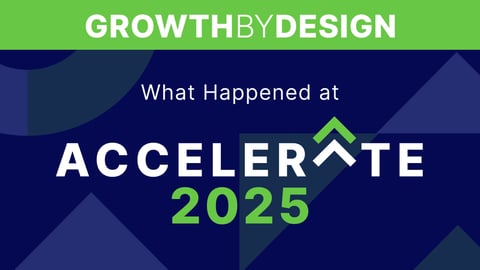In my last article, I offered a simple and powerful AI framework that sales leaders can use to meet and exceed their goals.
Many business leaders think that AI tells them what to do. That’s usually not the case, and this confusion causes many sales leaders to think too narrowly about how to use AI. This results in missed opportunities.
Rather, AI is a predictive tool that tells us what is likely to happen. What to do with those predictions is a very human decision, relying on expertise and judgment. I offer three ways to use these predictions: to more effectively plan, prioritize, and ideate.
Here, I’ll delve into more detail around planning, the simplest of the three.
“Planning simply means that when you can predict what’s going to happen, you can be ready for it.”
Consider a friend of mine who runs a high-end restaurant. He struggles to order the right amount of salmon for any given evening - if he orders too much, it can go to waste. If he doesn’t order enough, his guests are disappointed. If my friend could accurately predict the likelihood that each guest would order salmon for an upcoming evening, he could then simply order the right amount.
AI-for-planning is exceptionally helpful to organizations with more complex sales processes and inventory management than my friend’s small restaurant. If you can predict how much each salesperson on your team will sell next week, you can make sure to have the right amount of each item in inventory. If you can predict next quarter’s sales for each product line in each geographic territory, you can anticipate how much client support will be needed and where. You can then proactively ensure the right level of staffing.
AI also enables more accurate sales forecasting.
Traditionally, sales forecasts are built using historical data, sometimes merged with current market conditions. AI goes a level deeper by analyzing more granular data to generate more accurate, individual-level, predictions. For instance, AI might show that certain salesperson characteristics, such as prior sales success and number of years of sales experience, are strong predictors of sales. AI would generate a unique prediction for each salesperson by analyzing each person’s unique characteristics. To generate a “bottom-up” sales forecast, you would simply add up all the predictions. For instance, if 100 salespeople had an average predicted sales of $200k next quarter, you would anticipate a total of $20M in sales. Then, if a new salesperson, with different characteristics, were to join the team, AI would generate a different prediction, thus yielding a different forecast.
Notably, senior business leaders might choose to forego some of this forecasting accuracy for the sake of stability. While AI has the ability to create highly accurate, just-in-time, forecasts as day-to-day or even moment-to-moment events occur, forecasts that are constantly changing can hinder decision-making.
The key to using AI for better planning is to recognize value in its simplicity. If you know what is likely to happen, you can be better prepared. In future articles, I’ll talk about how to change outcomes, not just accept what will happen. If my friend merely wants to order the right amount of salmon, AI for planning is just fine. But if he wants to change behaviors - perhaps get more people to order more salmon - he’ll need to target the right people with the right incentive. That’s about prioritizing, which I’ll discuss in the next article. For now, I encourage you to keep it simple. Ask yourself this: if you knew what was going to happen, and you couldn’t do anything to change it, how could you make your sales team and your organization better?
Are you looking to drive better business decisions within your sales organization with AI? Improve sales performance with intuitive planning, effective prioritization, and strategies built for success. Get started today!




